Performance artist and photographer Dorit Cypis recalls her early years at NSCAD University.

Dorit Cypis (BFA 1974) is an artist, educator and mediator. Her career covers a varied landscape; performance, photography, and immersive media installation. At the core of all her work is an exploration of an artist’s role as creator and community-builder, asking the question: “Who am I to you?”
Born in Tel Aviv, and raised in Montreal, Cypis’ artwork has been presented in diverse cultural contexts across the U.S. and internationally since the 1980s. In addition to the various galleries and community centers that have displayed her work, Cypis has been exhibited at the Whitney Museum of American Art, the International Center of Photography, the San Francisco Museum of Modern Art, Musée d’Art Contemporain de Montréal, Palais des Beaux-Arts, Banff Center for the Arts, and many more.
In addition to her NSCAD degree, Cypis received a Master of Fine Arts from California Institute for the Arts, and a Masters of Dispute Resolution from Pepperdine University. In 2014, she was awarded a Guggenheim Fellowship and a Rauschenberg Foundation Residency.
I got a letter back from Gary Kennedy saying, we don't understand what you sent, but it's fascinating. Can you come for an interview?
Dorit Cypis
FAKE IT TILL YOU MAKE IT
While internationally renowned since her time in Halifax, Cypis remembers the strange and beautiful experience as a NSCAD student in the 70s. She speaks to alumni officer, Trina Annand about her time at the university with two unusual stories.
Dorit Cypis: So, you want to hear a story?
Trina Annand: Yes! I hear you have interesting tales to tell.
DC: All right, I’ll start with this one.
My first intended degree was a BA in sociology and psychology. I went to Concordia University, which at that time in 1968-69 was Sir George Williams University. I went there, because I wanted to study difference. Why is each person in a different body? And why is each body different from every other body? And I didn’t know I had no language for it, so I was told to study sociology and psychology.
After two years, I recognized that I was being trained to study others, when I didn’t know who the hell I was. It felt pretentious, so I went to my professor, and I asked him: how can I study others when I don’t know who I am? And he just looked at me and said, ‘Huh?’
This was late 60s and there was really no language for subjectivity, objectivity, the place of the viewer, how we define what we see, and so on. There was none of that conversation yet. I didn’t know any of it. So I said, well, if he can’t answer it, I can’t be here, and I dropped out.
My mother, an Eastern-European Polish woman who didn’t know what to do with me at home said, “Why don’t you go study art?” I had never studied art. I never drew. I was a daydreamer. I was asking 10,000 questions a day. I was very curious, but internally focused, with a vivid imagination. She said, “Maybe you’re an artist because you’re asking questions no one can answer, so why don’t you go to this Community Arts Centre in Montreal.”
So, I did and they put me in a drawing class. It fascinated me because they guided me to ask very different questions about seeing than anyone had ever asked me before. I just said, I don’t know where this goes, but I need to go to art school.
I had no portfolio, so I faked it. My father, this Eastern-European Polish guy, loved to take snapshots with his Kodak camera. We are in an upper duplex, so I told him to stand in the upstairs living room. It was the middle of winter and there were mountains of snow on the street. I told my dad I’m going to climb to the top of that mountain of snow wearing my go-go boots, my yellow leotards and a crocheted shawl I made. Take my photo.
I was making fun of hippies and was just exaggerating everything. That’s what I sent into NSCAD. I didn’t know that it was conceptual art. I didn’t know anything. I got a letter back from Gary Kennedy saying, we don’t understand what you sent, but it’s fascinating. Can you come for an interview?
I flew out and showed up at Gary’s office. He handed me a piece of paper, and said, “Answer one of these 10 questions and bring your answer back to me tomorrow morning at 9 a.m. I’ll tell you if you’re in or not.”
This is how you got into art school in those days, or at least into NSCAD. No portfolio reviews, just you cut it or you don’t cut it.
So, I took the piece of paper, I read the 10 questions that I’m supposed to respond to. They make no sense to me because they’re all abstract. I had never read questions or statements like that.
I remember question six; it said, “draw crumpled paper.” I was like how hard can that be? I’ll draw crumpled paper. I went to the art store at the school, bought a big pad of paper and some pencils. I went to the grocery store, bought my dinner, brought it home to my motel room and sat at the little desk. I crumpled a piece of paper, put it down next to me and then started looking and drawing.
By 3 a.m., I had destroyed every piece of paper I tried to draw crumpled paper on. This is crazy. How do you draw crumpled paper? This doesn’t look like crumpled paper. Then it occurred to me: this is really dumb. I don’t want to go to art school to learn how to draw crumpled paper. This is the stupidest thing I’ve ever heard of! Who cares about this dumb art school? I’m going to bed. I’m going to tell him tomorrow, forget it, I’m done with you, I’m going home.
In order to go to bed, I had to walk around the table to this little pathway. As I walked around the table to the open pathway, I realized what I had done. Every time I wanted to destroy a drawing that I made, I ripped it out, crumpled it up, and threw it across the room. I looked down and saw a mountain of crumpled paper.
I said, I’m going to show that guy. I’m going to play a trick. I got the brown paper bag from dinner, filled it to the brim with this crumpled paper, closed it up, went to bed for three hours. Then got up and got to NSCAD at 9 a.m.
Gary was sitting behind his desk. He looks up at me. I say, “Number six.” I put my brown paper bag on his desk, he stands up, opens it up. He looks in silence. And then he looks at me, he says, “Brilliant, you’re in.”
And I’m thinking, what an idiot. This was a joke. What could he possibly see in this? He’s seeing conceptual art; I’m seeing a dumb joke. Anyway, that’s how I got into NSCAD.
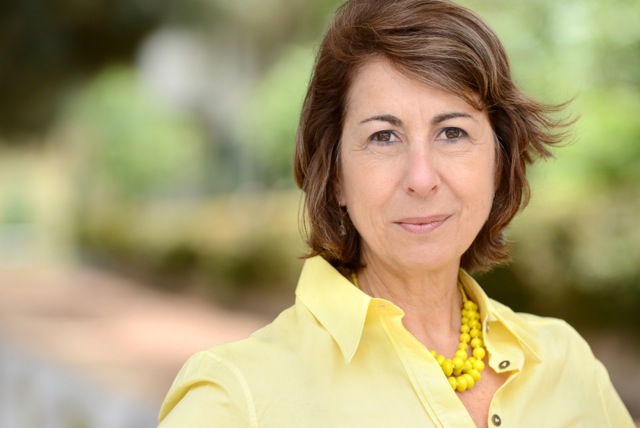
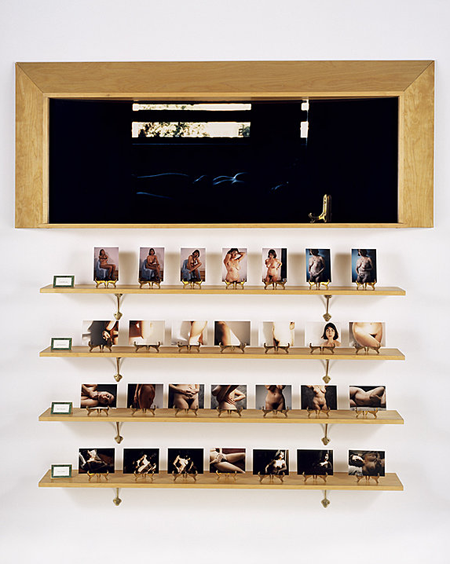

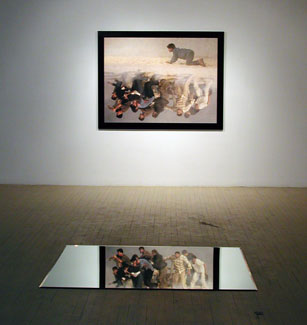
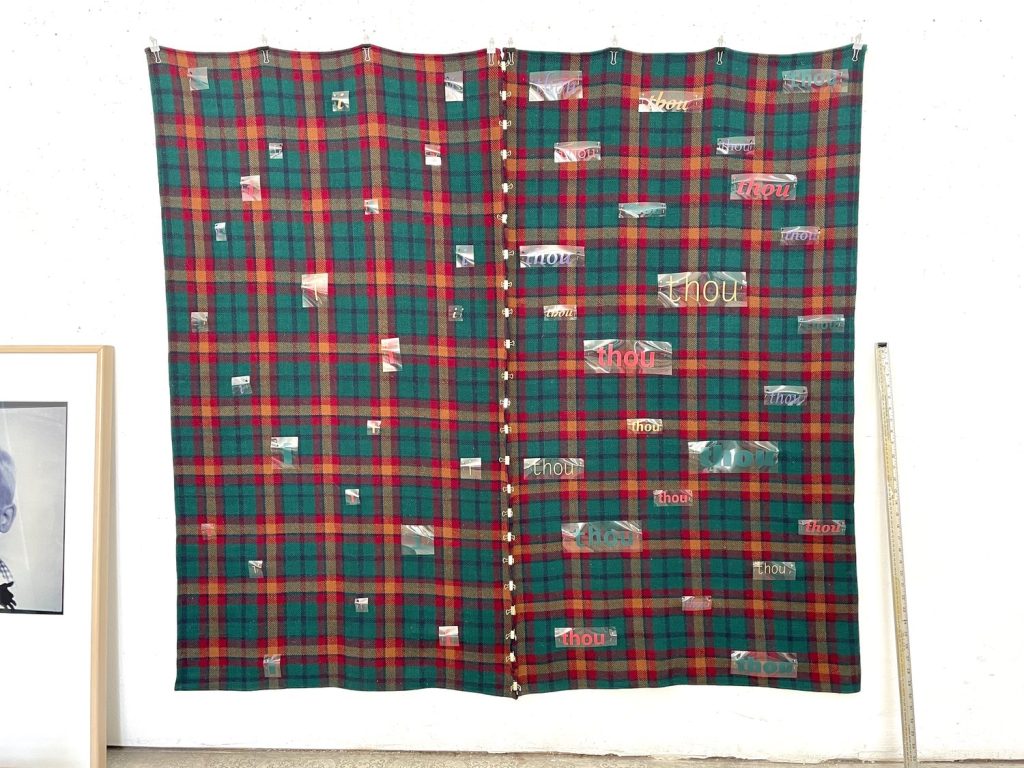
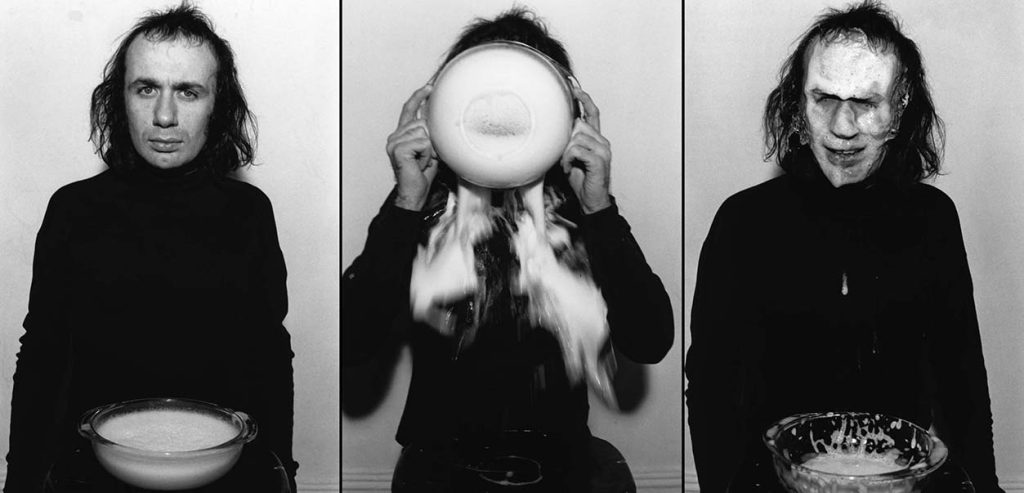
A STRANGE ENCOUNTER OF THE PERCULIAR KIND
DC: I have another story of my first year at NSCAD.
Once I got in and came to Halifax in September, I had to register for classes. I had no idea what to take. When my father was in Poland, he was a textile engineer. There was a weaving program at NSCAD, so I said, I’ll just take a weaving class because I sort of understand what that is from my father.
So, I entered the weaving class and learned how to weave. It took a year but I wove a Scottish tartan, which had nothing to do with my Jewish identity. It had to do with wishing my family still had our old traditional identity that was lost during the Second World War.
I was always there at night working, because it took forever. I left the studio (on Coburg Road) to go to the library. There was a long hallway from the weaving studio to the library, and the library had two glass doors. The doors were closed but there was a man standing in front of them.
As he saw me, he just stared at me. And I stared at him because he was butt naked. He was naked, not a stitch of clothing on him — and he was pretty hairy! I was the only one there, it was after seven at night and he’s just staring at me.
Then he starts to pluck hairs off his chest, one by one. I’m standing maybe six feet away from him just staring at him going, “what the hell was going on?” He’s plucking hairs off of his chest. Then he tucks his penis between his legs to make like a fake vagina. He knows I’m staring, and he’s doing it for my gaze. I’m just looking at him and he kept doing this.
Finally, I got bored and left.
The next morning, in another class, I told my classmate what had happened. My classmate started laughing and she said, “Oh my god, that was Vito Acconci!” That was the beginning of the body art he was making when he was in residence at NSCAD back in 1971. That’s what I was encountering.
I looked at it and said, “damn, that’s art.” So, I quit weaving and went into conceptual art and performance. I said, “Oh, this is way more fun.” That positioned my genre.
DC: So those are two NSCAD stories from 1971.
TA: Wow. Sounds like you guys had more fun than we did.
DC: Absolutely. Way more fun than today. Way more fun.
You can watch the full interview with Dorit Cypis on NSCAD’s YouTube Channel.
